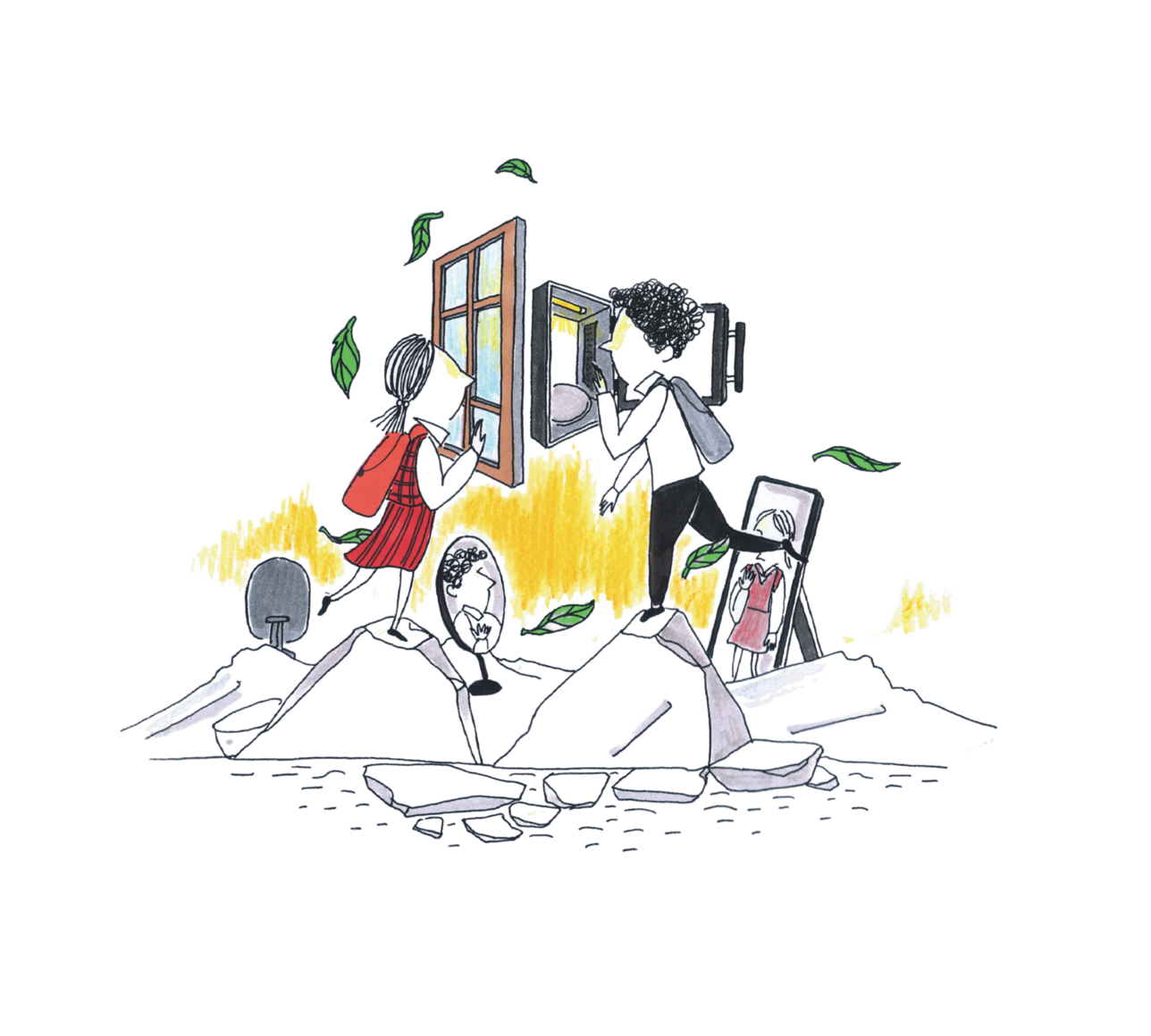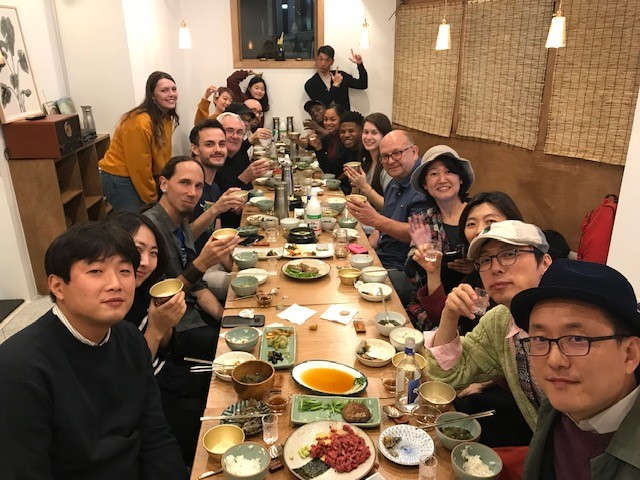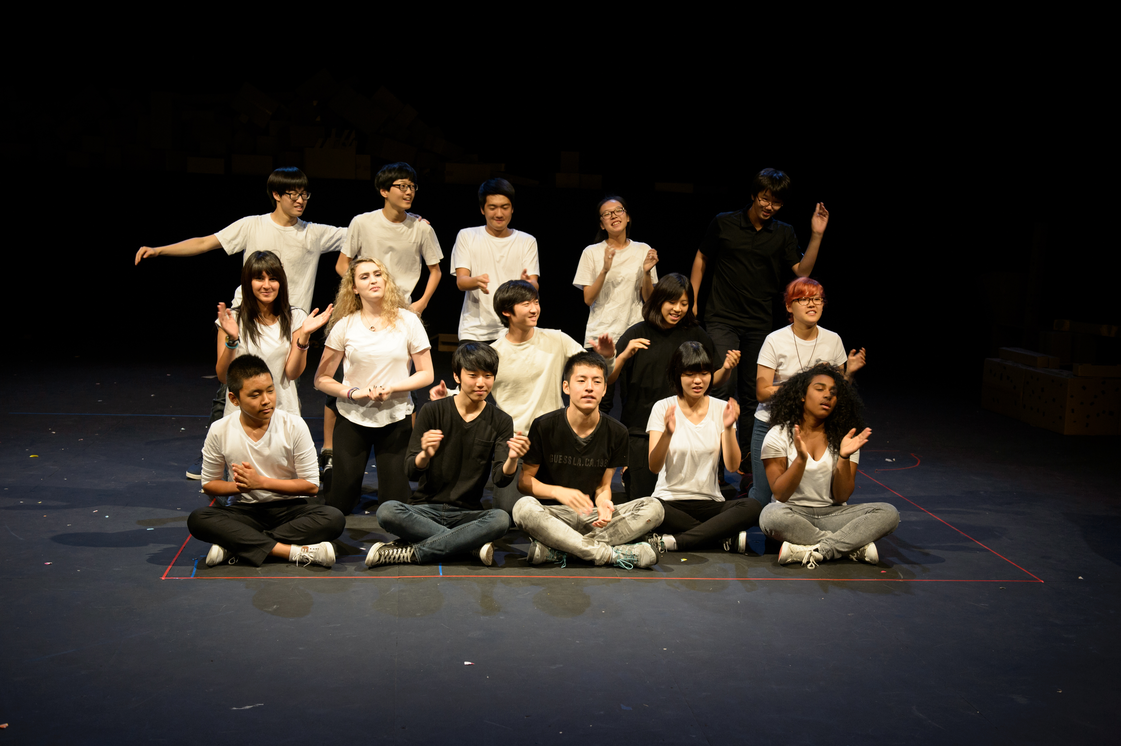What is an equal international collaboration, and is it possible or desirable to achieve balance in a collaboration across cultures?
The principles of the Hanyong Theatre Company when it was first established placed strong emphasis on 'equal' collaboration. This was directly in response to a perception of previous artistic and other collaborations between the UK and Korea as having been far from equal. As Choi Young Ai indicates in Theatre Perfomance and Change, 'Korea has been struggling to establish its own cultural identity within the influx of Western Culture.' The predominance of western-influenced work was a reason behind the establishment of Choi's own University KNUA in the 1990s, to further the cause of traditional Korean arts, and to find new hybrid forms. So an awareness of the belief that western artists had been dominating Korean arts was at the heart of setting up Hanyong, and the aim of creating work which was genuinely collaborative a significant part of the company's raison d'etre.
Over the course of the first three Hanyong projects, the value of this balance had been clearly demonstrated. As detailed in the interview section about this period, if everyone is creating as equals, the plays become the holding form for the knowledge of two cultures, and are then able to be genuinely greater than the sum of their parts.
The principles for achieving this balance are not complicated, although they are undoubtedly hard to maintain. Where possible the practical tasks are distributed evenly - balance across the organisation in the divison of labour, balance across the cast, balance within the piece between the two languages. All of these are achievable, but can be compromised by practical considerations. Funding, for example, cannot be guaranteed to balance. With a project on the scale of Orange Polar Bear, the division of responsibilities could remain an aspiration, but the funding dictated at times that more of the responsibility for production was carried by the Korean side, given that the funding was disproportionately provided from Korea.
The artistic balance is easier to maintain and control. For the visible balance on stage to be right, it is clearly helpful to have equal numbers of actors from the two countries, but other aspects are not dependent on funding. The balance of languages, and other balances within the story are in the hands of the creative team and can be adjusted at any stage if they feel uneven. Balance of this kind was clearly a desired outcome with Orange Polar Bear, and so this was a focus of many discussions in the reworkings of the script and throughout the rehearsal period.
The other key aspect is the most complex and perhaps most significant of all. This is the perceived balance in power in the central relationship between the two cultures. This is crucial and potentially fragile, and can be dependent on subtle attitudes, and undermined by relatively small incidents, misunderstandings or disagreements. The participants in their accounts of each of the Hanyong projects regularly stress the importance of trust, of non-heirarchical relationships and openness to cultural difference. This message was stated as important at the outset of Orange Polar Bear and emphasised throughout the project.
As described in the interview section of this exposition, the policy of working at all times with interpreters was a crucial factor in this balance. If someone is working in a language other than their own, then the collaboration is not equal. This simple but expensive rule is important practically, but also symbolically, and marks out the work of Hanyong from other international collaborations. It feels like an important point of principle. If the work is happening in English, how can a genuinely equitable collaboration be maintained?
The evidence from the responses to Orange Polar Bear supports the idea that this balance is important artistically as well as politically. Audience reaction and published reviews refer to '...the focus whilst they were performing – I loved how they were from different ends of the earth – speaking different languages, yet that flowed together' [Birmingham Repertory Theatre 2018] and the sense of ensemble is repeatedly praised. Audience members find the fact of the collaboration moving, irrespective of the story, and so there is a level on which the whole theatre experience is making a strong statement about the 'global village'. Here are a group of actors together on stage, clearly working as a unit, demonstrating an ease of communication, a sense of understanding across language barriers, and a simple togetherness. This whole narrative is found in the comments afterwards almost as much as observations on the actual story of the play, and is clearly a really important part of the value of this kind of collaboration. It seems reasonable to infer that this would not work so well if the collaboration felt unbalanced or unequal.
In Orange Polar Bear, this principle in the process in some way found its way into the fabric of the production. Maybe in part because it evolved over such a long period, in which there were repeated sessions with teenagers, the developing relationship between artists became mirrored by the relationship between the two stories in the play. In this way the two separate teenagers meet up in this 'other' world of Orange Polar Bear. The way the connections are established combines with the connections visible in the artistic process, to make this perhaps the most eloquent aspect of the play as a whole - no matter how different, there is so much that binds us together.
References
Choi Y.A (2018) The Third Space: Inter-cultural Youth Performance as a Catalyst for Change. In: Etheridge Woodson S, Underiner T eds. Theatre, Performance and Change [Palgrave MacMillan] pp39-46
Birmingham Repertory Theatre Marketing Team (2018) Orange Polar Audience Responses [Birmingham Repertory Theatre]
Key partners at the beginning of this project - left to right Peter Wynne-Willson of BCU and Hanyong Theatre, writers Ko Sun Duck and Evan Placey, and Professor Choi Young Ai of the Korean National University of the Arts, and the National Centre for Teenage Drama Research.



